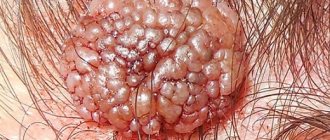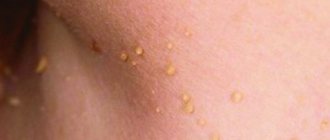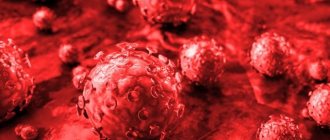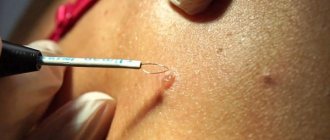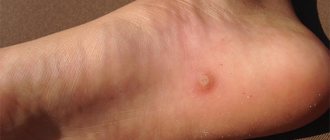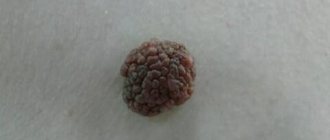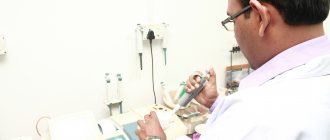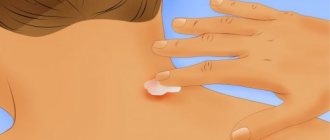About 70% of the world's population suffer from various skin growths. The cause of such formations is most often an infectious disease - the human papillomavirus. The growths can affect almost any part of the infected body. They occur on the face, chest, back, upper and lower extremities, and even in the groin area. The list of especially unpleasant formations includes warts under the arms. The whole unpleasantness of this phenomenon lies in the sensitivity of the affected area, and constant discomfort due to friction in the armpit. Therefore, the issue of eliminating neoplasms becomes extremely acute.
Features of axillary warts
Depending on the location, the wart may differ in its size, shape, and growth rate. Hanging papillomas usually appear in the armpit area. They look like cone-shaped nodules that are attached to the skin with a thin stalk. The length of such warts under the arms reaches several millimeters. The formation may be flesh-colored, white, red or brown. Hanging warts under the armpit bring a lot of inconvenience to their owner. They are easily injured. Such growths can be torn off or damaged by a razor or tight-fitting clothing.
Another type of growth that can appear in this area is round growths on a wide base. They are firmer, most often flesh-colored. They can occur singly or as a group of formations.
Very often, a wart growth that appears in the mouse spreads to other parts of the human body. Such papillomas can be found in the chest area, on the inside of the upper limbs, and even in the abdomen. There are many photos on the Internet.
The armpit area has the largest number of sweat glands. Because of this, papillomas are located in a humid environment, which contributes to the spread of infection. For this reason, people with excess body weight and those who play sports suffer from profuse growth of hanging warts.
How to distinguish from hanging moles
A doctor can distinguish a hanging wart from moles under the arm. The second has its own capillary network due to modification of the lines of the skin pattern. In case of self-destruction, the normal structure of the integument is restored.
Dilated capillaries in warts bleed when hyperkeratosis is removed. The color of the element is close to the color of the skin. Helps differentiate the formation from callus, molluscum contagiosum, seborrheic keratosis, lichen planus.
- flesh color, grayish;
- sizes from half to one and a half centimeters;
- the surface is uneven, rough.
Pedicled moles, consisting of melanocytes, are always dark in color - from café au lait to dark brown, almost black, with the exception of blue nevi and hemangiomas, which are red in color. In some cases, viral growths are characterized by symmetry: the so-called kissing warts. In most cases, nevi are formed in a place exposed to frequent ultraviolet radiation (on the neck).
Why do hanging growths appear under the arms?
The reasons for the appearance of warts lie in infection with the human papillomavirus. Contrary to the popular belief that infection is acquired exclusively through sexual contact, it should be noted that the disease is easily transmitted from a sick person to a healthy person through household contacts.
HPV easily penetrates the human body. Even a momentary touch is enough for the infection to enter the body. Most often, infection, with the subsequent appearance of formations under the armpits, occurs:
- if a person uses other people’s hygiene devices;
- when sharing towels, washcloths and clothes;
- in beauty salons, if sterilization is not observed;
- in close contact with an infected person.
There is a high probability of “catching” the disease when using someone else’s razor. During shaving, the skin can be damaged and infection particles can enter the wound. Excessive sweating also causes skin irritation, which allows the virus to enter the body.
Provided the body is healthy, external manifestations of the disease will not appear immediately. The infection can be present in the body for years, and in the meantime the person will not realize its presence. Symptoms will “come out” when the body’s immune system weakens and allows the virus to become active. The reasons for weakened immunity lie in stress, long-term use of antibiotics, chronic diseases, and lack of vitamins. Bad habits and hypothermia also negatively affect the functioning of the immune system.
We recommend reading:
- Types of warts
- Wart patch
- Laser removal of warts
Varieties
Papillomavirus provokes the formation of growths that vary in appearance.
Their diversity can be explained by the huge number of viral strains, about a hundred of them.
Each of them has a specific method of penetration into the body and favorite places of localization:
- ordinary warts are growths with a keratinized rounded surface, hard bumps that usually appear on the skin of the hands and fingers; less commonly, this type of growth forms on other areas (back, legs), in children they can be found on the knees;
- flat - growths in the form of even spots, slightly raised above the skin, can itch and cause inflammation of surrounding tissues, usually appear on the face, less often on the arms and chest;
- plantar - grow on the feet in the form of rounded formations, very dense, consisting of individual outgrowths, some of them may crumble and cause pain when walking;
- thread-like - thin formations in the form of individual papillae, usually on a stalk, rarely reach more than 0.5 cm in length, prefer areas of skin in the folds of the body (armpits, groin, under the breasts), but often appear on the thin skin of the face and neck;
- genital warts are a type of wart on the mucous membranes, usually infected through sexual contact, the resulting growths have cone-shaped tops, elastic and elastic to the touch, the usual place of their localization is the intimate area.
Why do armpit warts hurt?
Painful discomfort sometimes accompanies the appearance of papillomas. This is not a characteristic sign, and its appearance indicates some kind of violation. The reason for this phenomenon is most often the influence of external factors. These factors include:
- Mechanical damage to warts. Sometimes, intentionally or accidentally, a person rips off a growth, after which the damaged area hurts greatly. You can also injure a papilloma while shaving this area. Damaged tissues become more sensitive.
- Squeezing or rubbing clothing. The skin on the armpits is often subject to friction from underwear or the seams of thick clothing. Since such a wart tends to hang, it is easy to crush it. In this case, irritation of the skin, redness of certain areas, itching and burning are observed.
- Inflammatory process. If papilloma tissue or skin is damaged, pathogenic bacteria can penetrate into the affected area. As a result, inflammation begins. In this case, tissue swelling and acute pain are observed, especially during touch. Sometimes the patient's body temperature rises and there may be pain in the chest area.
- Suppuration, which is the result of inflammation, causes an acute feeling of pain and discomfort. At the site of injury there is severe swelling, redness, and discharge.
- Wart irritation later. The sweat secreted by the glands affects the formations. Firstly, they steam, and secondly, they are bursting with salt that leaves the body with sweat.
Also, the sensation of pain can appear as a result of the processes of degeneration of benign cells. In this case, the growth begins to change its shape and grow sharply. Its color changes (most often the wart turns black around the edges). Bleeding may occur. In addition to pain, there is a burning itch.
Terrible view!
Hidradenitis begins with discomfort, burning and redness in the armpit. Then dense, painful round or oval nodules appear in this place. Gradually they increase in volume, swell and become like papillae (by the way, that’s why the disease is popularly called “bitch udder”). In this case, the person feels unwell and severe pain in the shoulder joint when moving, so he has to keep his arm in an abducted or elevated position. After some time, the nodules open and pus is released.
Related article: Lump under the armpit, causes and treatment →
Various treatments and removal of hanging warts under the arms
Treatment for warts begins with eliminating the infection. Without this approach, wart removal will not bring the desired result. The therapeutic complex consists of taking medications with antiviral and immunostimulating effects. Thus, the body’s natural defenses are restored, and the infection is weakened to such an extent that the immune system is able to cope with it. This type of medication is prescribed exclusively by the attending physician, since the drugs have contraindications and side effects. The most common medications: Allokin Alpha, Viferon, Cycloferon, Interferon.
There are several ways to remove growths (you will find photos online). The first is removal in a hospital setting using one of the proposed procedures. The most popular are:
- exposure to liquid nitrogen - cryodestruction;
- exposure to electric current with simultaneous sealing of capillaries - electrocoagulation;
- removal using high frequency waves - radio knife, radio wave excision;
- use of laser – laser excision;
- cutting out a wart with a scalpel is a surgical operation.
Each procedure is carried out under close supervision. Before it begins, the patient undergoes a diagnostic examination. This allows you to see the full picture of the disease, identify all contraindications and the extent of the spread of the disease.
The second traditional method is treatment with special drugs. By purchasing such products, a person can carry out the removal procedure independently. The third method is treatment with folk remedies.
Diagnostics
Acrochordas are diagnosed with a simple examination by a dermatologist .
To study papilloma, tests are carried out that can not only determine its type, nature, exclude malignant degeneration, but also identify which strain of the virus is the causative agent.
Carry out:
- PCR (polymerase chain reaction) analysis allows you to determine the presence of the virus and the risk of malignancy.
- Histology and biopsy - excludes or confirms the presence of atypical cells and the extent of the lesion.
- The Digene test is the most accurate test used to confirm other studies.
Home treatments
Treatment at home occurs by applying a special drug to the wart. The armpit is a sensitive area, so products should be applied with extreme caution. Such drugs are produced in various forms: cream, gel, ointment, solution, cryopreparation, patch, pencil, etc. A person chooses the most convenient means for him. The main thing is to carefully read the instructions for the drug before use and follow them. It is advisable, before purchasing medications, to consult a doctor who will tell you how to remove papilloma with greater efficiency.
Using celandine, castor and tea oil, ammonia, peroxide and vinegar, you can also remove formations.
Warts under the armpit seem to be quite harmless formations. However, they entail many inconveniences and complications. Therefore, if such a papilloma appears, it is better to consult a doctor and begin immediate treatment.
The article has been verified by the editors
Hidradenitis of the armpit or udder knot
Hidradenitis is an inflammation of the sweat glands, accompanied by purulent processes (the outdated name is knotted udder).
The mechanism of development of the disease is as follows: the bacterial pathogen penetrates through microdamages (scratching, cuts) or through the flow of lymph into soft tissues, affects the sweat gland and its ducts, resulting in the formation of an inflammatory infiltrate. With further development of the process, purulent exudate accumulates in the area of the gland.
Due to the active activity of the sweat glands located in the axillary zone, axillary hidradenitis is the most common.
Causes of hidradenitis
The causative agents of the disease are bacteria - staphylococci, less often - streptococci and some other microbes. The route of infection is lymphogenous or direct penetration into the hair follicle, and from it into the sweat gland.
In the frequent occurrence of hidradenitis, a hereditary factor also plays a special role: there is a high risk of the disease occurring in people who have similar phenomena in their family history.
Hidradenitis rarely develops against the background of normal functioning of the immune system; Due to decreased immunity, purulent inflammation of the sweat gland may appear during pregnancy, as well as in the first months after childbirth.
